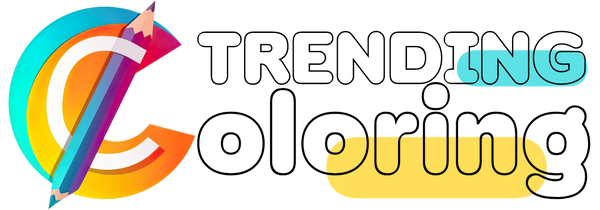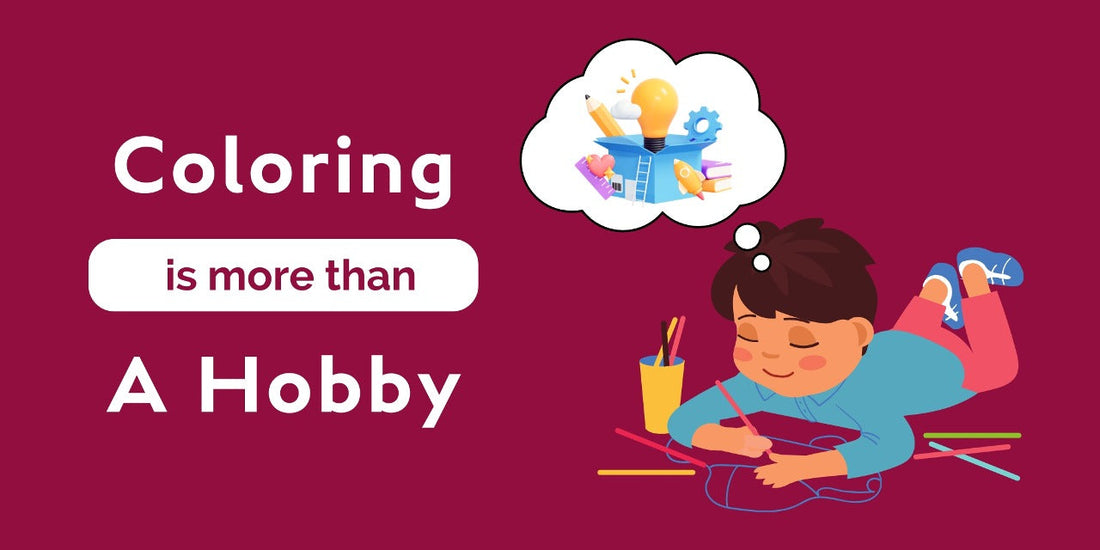Coloring—filling in pre-drawn lines with pencils, markers, or crayons—can seem a modest activity, a nostalgic reminder of childhood scribbles. In a world that’s all aflutter about mindfulness and self-care, coloring has evolved into much more than a craft. It’s a deep activity that combines relaxation, emotional exploration, physical enjoyment, and social connection, offering something meaningful to everyone, from children to adults seeking a calming refuge. This article transcends why coloring is more than its artistic beginnings, revealing its depth as a well-being activity.

Coloring is more than just a hobby
A Gateway to Calm: Stress Relief and Relaxation
In the busy world we live in today, stress is always at our side—deadlines loom, screens light up, and minds spin. Coloring is a calming antidote. The mindless motion of tracing a pencil on paper and coloring inside lines is an imitation of meditation. It slows your breathing, quiets your mind, and brings you into a calm cadence. It’s science-proven: a 2016 study by the Journal of the American Art Therapy Association discovered that adults who colored every day had a significant reduction in symptoms of depression and anxiety. It’s not a rumor—science proves coloring can lower cortisol levels, the stress hormone, a calm sanctuary in the midst of life’s chaos.
Take a floral mandala, for instance. As you shade each petal, your focus narrows, and the outside world fades. It’s not about artistic mastery; it’s about the process. Whether you’re unwinding after a long day or carving out a moment of peace, coloring becomes a sanctuary, proving its worth beyond mere creativity.
Mindfulness in Motion: Sharpening Focus
Coloring is not just relaxation—it's a mindfulness practice disguised as a hobby. Concentrating on a design, selecting colors, and staying inside the lines anchor you in the present. Distractions vanish as you ponder whether a butterfly's wing is teal or violet. This focus is similar to meditation practices, training your brain to stay here, now, rather than speeding into yesterday's regret or tomorrow's worry.
The payoff? Sharper mental concentration. In the multitasking, notification age, coloring is a rare chance to single-task. It’s a brain reboot, a way to sharpen your concentration. For kids, it’s a playful lesson in concentration; for grown-ups, it’s a break from the insanity. Every completed section is a victory, proof that coloring is as much a brain exercise as it is a work of art.
A Therapeutic Canvas: Emotional Healing
Beyond calm and focus, coloring has a therapeutic edge. Art therapists have long used it to help people process emotions that words can’t capture. In a structured coloring page, you’re free to pour out feelings through color—bright reds for anger, soft blues for peace—without the pressure of starting from scratch. It’s a safe space to explore what’s inside, whether you’re a child grappling with big feelings or an adult navigating grief.
This isn’t a cure-all, of course. For serious mental health challenges, it’s a companion, not a replacement, for professional care. But its power is real. WebMD notes that coloring can reduce anxiety by engaging both brain hemispheres—logic for the structure, creativity for the colors—balancing your emotional landscape. It’s a quiet rebellion against bottling things up, proving coloring’s role as a healer, not just a hobby.
Hands at Work: Physical Benefits
Coloring isn’t in your head—it’s in your hands, too. The intentional grip of a pencil, the firm strokes, and the subtle pressure shifts—all these refine fine motor skills. For kids, it’s the foundation of writing and hand ability, a stepping stone to independence. For grown-ups, especially those recovering from injury or managing conditions like arthritis, it’s a low-impact way of keeping dexterous hands.
Think of it as physical therapy light. An elderly man coloring a garden scene might be maintaining coordination; a stroke patient might be regaining strength. It’s unknown but significant, blending physical exercise with visual delight. This two-for-one deal takes coloring out of the realm of mindless art—this is body-and-soul exercise.
Expression Without Words: A Personal Voice
Even when lines are already drawn, coloring is subjective. The lines are already drawn, but the colors are your own. A tree may be green or pink; a sky may be yellow or purple bruise. That is the freedom that renders coloring a silent language, a way of screaming, whispering, or dreaming without saying a word. For those who are unable to put feelings into words—children, introverts, or anyone trapped in a tight corner—it’s a lifeline.
This self-expression is not a matter of skill but of choice. You don't need to paint the tree; you simply decide its mood. That freedom brings color to the drab canvas, where every brush stroke is an extension of you, making it an art form no more, but an expression of the soul.
Open to All: Accessibility and Inclusion
Unlike painting or sculpture, which can intimidate with their blank pages, coloring welcomes all. The lines are drawn for you—you just add the magic. No artistic talent? No problem. A five-year-old and a retiree can sit side by side, each producing something beautiful. This is the beauty of coloring, breaking down walls of age, ability, or experience.
It’s a hobby that comes to you where you are. Whether you’re picking up a dollar store crayon or an expensive marker set, the result is yours to enjoy. In a world that tends to gatekeep art, coloring flings the gates wide open, demonstrating it’s something greater than a niche interest—it’s a human delight that transcends.
Building Bridges: Social Connection
Coloring isn’t always solitary. It’s a bridge to others. Online, people share their pages on online platforms, sparking conversations with hashtags like #ColoringCommunity. In person, coloring groups pop up in libraries and cafes, turning a lone activity into a social one. Friends swap tips; strangers bond over shared designs. It’s a quiet way to connect, fostering friendships without the pressure of small talk.
Imagine a rainy afternoon, coloring with family, or a virtual hangout where you compare pages. These moments weave a community, showing that coloring isn’t just personal—it’s collective, a thread tying people together across miles and generations.
Lessons in Patience: A Slow Reward
Complicated patterns—think sweeping woods or detailed mandalas—take time. You can't rush a masterpiece. The painstaking process breeds patience, something our instant gratification society badly needs. Each part you finish is a step, not a sprint, and the gradual build repays with persistence.
For kids, it's a lesson in grit; for grownups, it's a reminder to breathe and trust the process. The payoff isn't the finished page—it's the self-control you develop along the way. Coloring becomes a teacher, teaching you to grit, way more than a creative hack.
Pride in the Finish: A Boost of Joy
And then, naturally, there is the thrill of completion. Getting through a page, especially a hard one, is a cause for pride. You’ve brought black-and-white into existence, and that tangible success puts you in a good mood. It’s a tiny victory, but in an infinite universe of tasks, tiny victories are significant. They feel good; they make you want to attempt it again, and they return you.
This pride doesn’t fade. A blue page on your fridge or on the internet is proof of your labor, a confidence booster that stands true long after the pencils are stored. It’s not art—it’s accomplishment.
More Than Meets the Eye
Coloring is no mere hobby. It’s a stress-buster, a mindfulness tool, a therapist’s ally, a physical tune-up, an expressive outlet, an inclusive embrace, a social glue, a patience teacher, and a pride inducer. From the American Art Therapy Association to everyday voices on Healthline, the evidence is clear: coloring enriches lives in ways creativity alone can’t claim. On this late February day, as spring peeks around the corner, pick up a page. You’ll find it’s not just coloring—it’s living, fully and beautifully.
Learn more about coloring with Trending Coloring!

